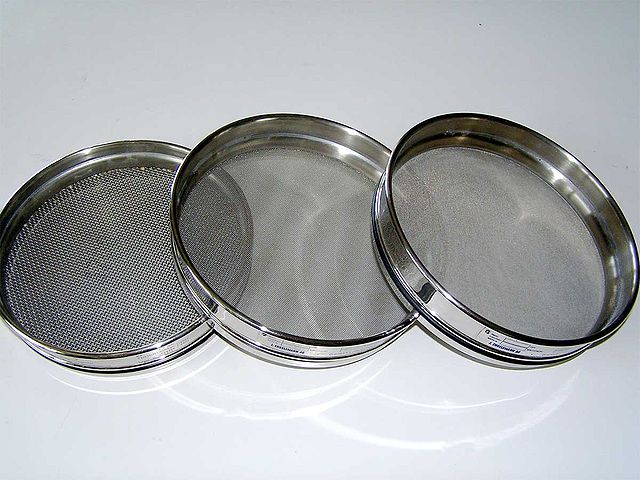Mechanisms of size separation: Size separation is useful since particles are sorted into categories solely on the basis of size, independently of other properties such as density, surface, etc. It can be used to classify dry or wet powders and generates narrowly classified fractions. While doing this mechanical sieving equipments used works on the principle of agitation, brushing, and centrifugal force.

Table of Contents
Agitation Method
A single sieve or sieves in a set may be agitated in different ways.
(i) Oscillation:
In this case, the sieve is mounted in an inclined frame or rack that oscillates back and forth. This is the most common and simple mechanism in which material rolls on the surface of the sieve and sometimes forms a ball. This movement is achieved by the ordinary eccentric movement of the rotating motor shaft.
(ii) Vibration:
Sieves in this mechanism vibrate at a high speed mechanically or electrically, allowing powder material to pass through. Sinusoidal and gyratory vibrations are the two types of vibrations. Sinusoidal vibration occurs in a plane that is tilted away from the horizontal. Frequency and amplitude determine the vibration in a wave pattern. Sieves may move up and down or left to right as a result of this motion.
(iii) Gyration:
The sieves are held in place by a rubber attachment attached to the rotating eccentric flywheel. This causes the material to move by producing a movement of the desired amplitude and intensity. Particles can spin and pass through meshes thanks to rotary motion. Gyratory vibration occurs in a reciprocating side-to-side motion at low angles near the level plane.
Brushing Method
The material to be sieved for size separation is fed through sieves in different directions using brushes. In circular sieves, the brush rotates around the sieve’s central axis, but in horizontal cylindrical sieves, it rotates across its longitudinal axis. The meshes can be kept clean with the use of a brush. This technique works well with damp, greasy, or sticky materials.
Centrifugal Method
This approach employs a vertical cylindrical mechanical sieve. It has a high-speed rotor inside the cylinder that uses centrifugal force to throw particles onto the sieve. Particle separation is caused by a stream of air created by the rotor’s rotation. An air jet can be installed in the cylinder to help particle separation even more.
Other particle separation processes include gravitational force, density, and electrostatic force. Gravity is a physical interaction that causes the material to descend to a lower level when it is discharged from the sieve. The particles are also pulled through the sieve media by gravity. Substance stratification is related to the density of the material. In this situation, the classification is based on the material’s weight. When particles are excessively dry or moist, electrostatic force can be used to help sift them.
Make sure Check our Amazing Article on: What is a sieve?